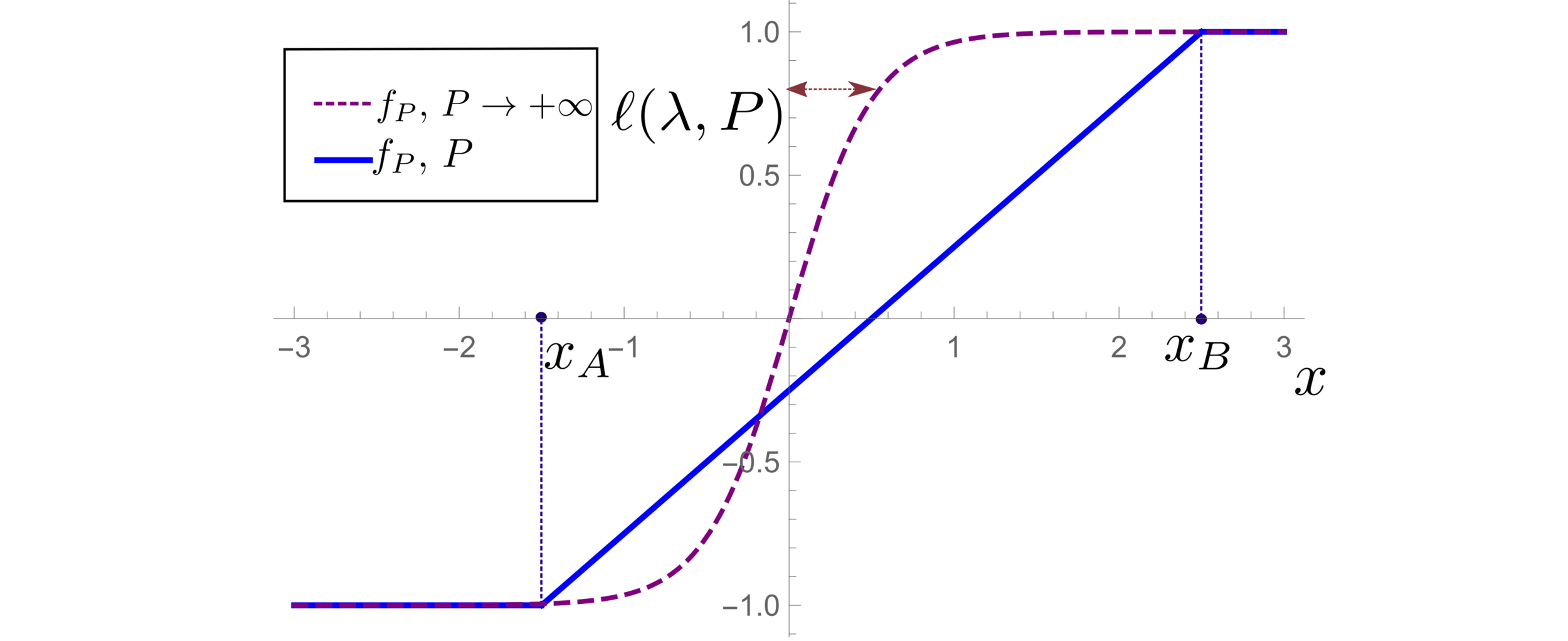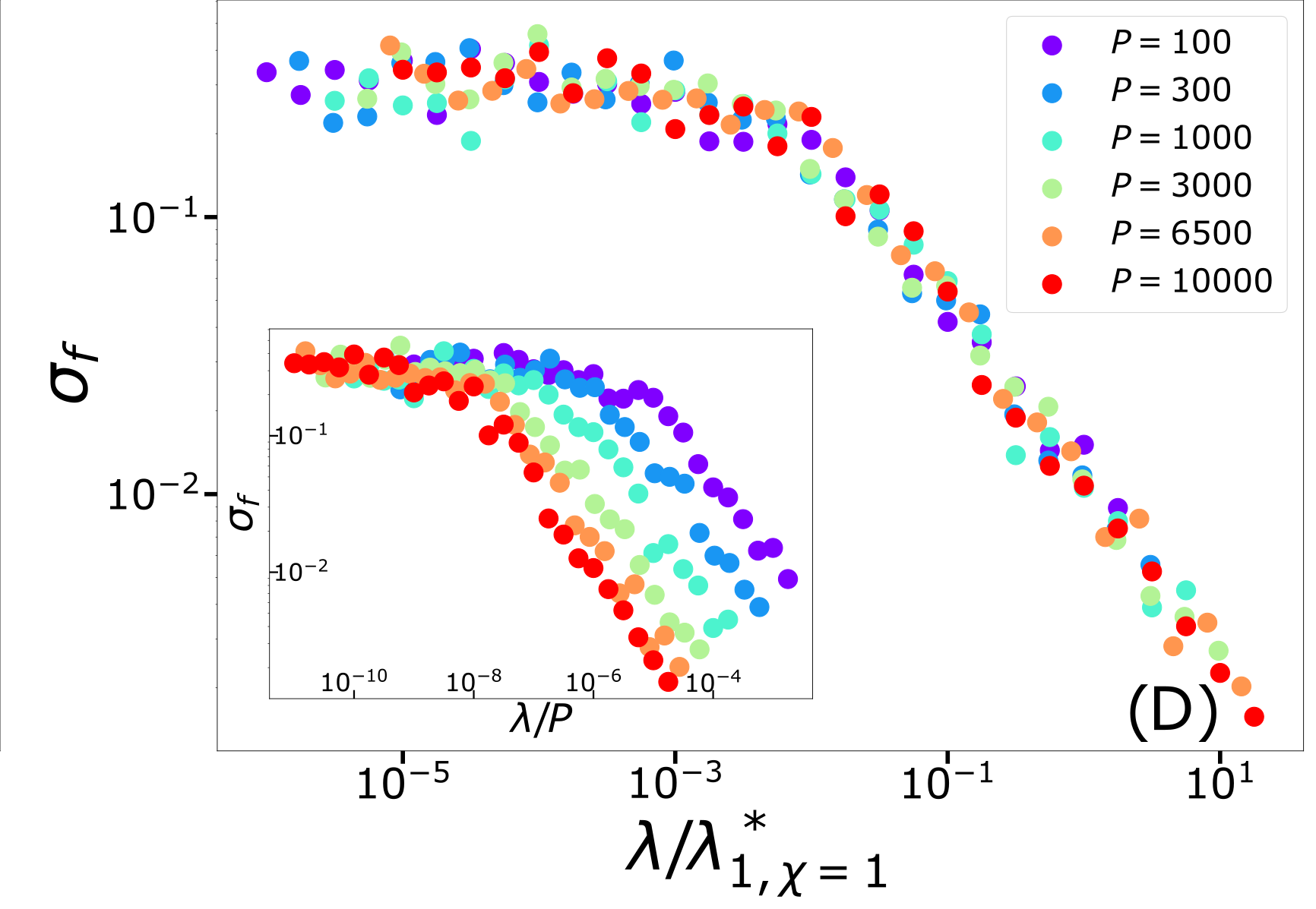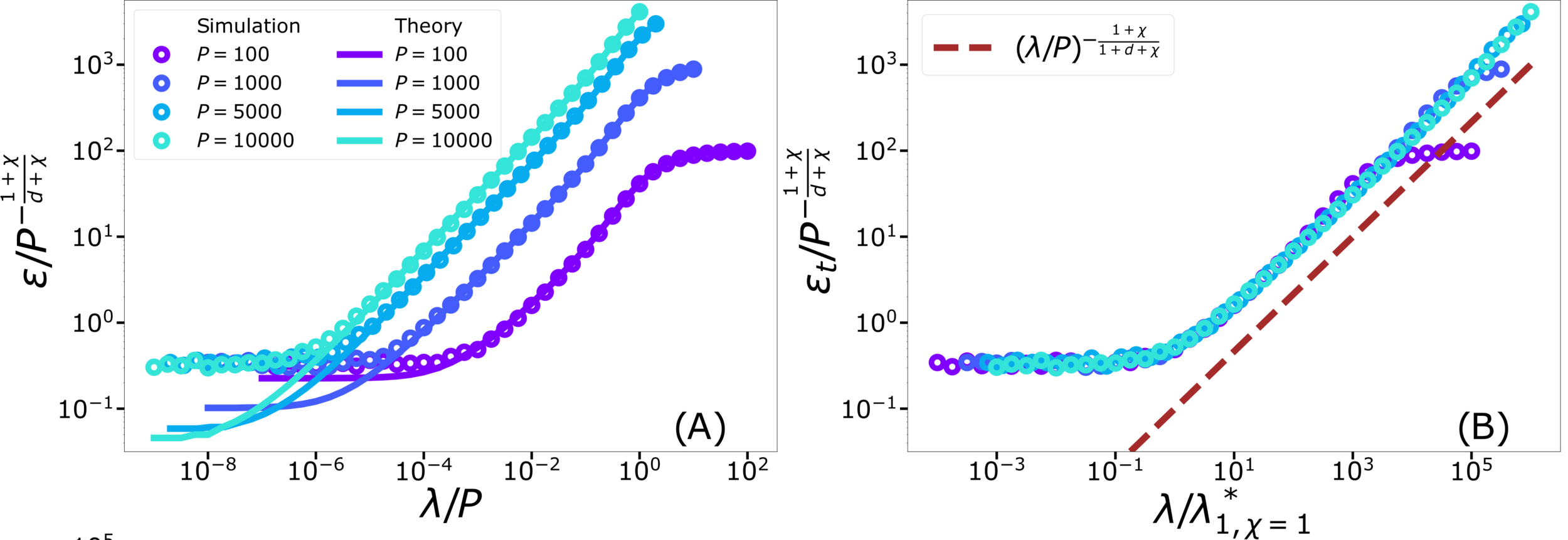Failure and success of the spectral bias prediction
for Kernel Ridge Regression:
the case of low-dimensional data
First Workshop on Physics of Data
6 April 2022
Joint work with A. Sclocchi and M. Wyart [2202.03348]

Supervised Machine Learning (ML)
- Used to learn a rule from data.
- Learn a target function \(f^*\) from \(P\) examples \(\{x_i,f^*(x_i)\}\).


Example: recognize a gondola from a yacht
\(\rightarrow\) Assuming a simple structure for \(f^*\):
\(\beta\sim 1/d\)
Curse of Dimensionality
- Key object: generalization error \(\varepsilon_t\) on new data
- Typically \(\varepsilon_t\sim P^{-\beta}\)
- \(\beta\) quantifies how many samples \(P\) are needed to achieve a certain error \(\varepsilon_t\)
\(\rightarrow\) Images are high-dimensional objects:
E.g. \(32\times 32\) images \(\rightarrow\) \(d=1024\)
\(\rightarrow\) Learning would be impossible!
ML is able to capture structure of data
How \(\beta\) depends on data structure, the task and the ML architecture?
Very good performance \(\beta\sim 0.07-0.35\)
[Hestness et al. 2017]
In practice: ML works
We lack a general theory for computing \(\beta\) !
Algorithm:
Kernel Ridge Regression (KRR)
- Predictor \(f_P\) linear in non-linear \(K\):
Train loss:
Motivation:
For \(\lambda=0\): equivalent to Neural networks with infinite width,
specific initialization [Jacot et al. 2018]
\(K(x,y)=e^{-\frac{|x-y|}{\sigma}}\)
E.g. Laplacian Kernel
Can we apply KRR
on realistic toy models of data?

- MNIST
- Reducing dimensions for visualization (t-SNE)
- From towardsdatascience.com
- From 28x28 dimensions to 2, with \(10^5\) samples

Depleted Stripe Model

[Paccolat, Spigler, Wyart 2020]
Data: isotropic Gaussian
Label: \(f^*(x_1,x_{\bot})=\text{sign}[x_1]\)
Depletion of points around the interface
[Tomasini, Sclocchi, Wyart 2022]

Simple models: testing the KRR literature theories
- Based on replica theory, they predict the test error
- In the limit of \(\lambda\rightarrow 0^+\): spectral bias
- They work very well on real data. Yet, their validity limit is not clear;
- Which are the real data features which allow their success?
[Canatar et al., Nature (2021)]
KRR learns the first \(P\) eigenmodes of \(K\)
Test error: 2 regimes
(1) For \(P\rightarrow \infty\): predictor controlled by characteristic length:
\( \ell(\lambda,P) \sim \left(\frac{ \lambda \sigma}{P}\right)^{\frac{1}{1+d+\chi}}\)
In this regime, replica prediction works.
For fixed regularizer \(\lambda/P\):

Test error: 2 regimes
For fixed regularizer \(\lambda/P\):
\(\rightarrow\) Predictor controlled by extreme value statistics of \(x_B\)
\(\rightarrow\) Not self-averaging: no replica theory
(2) For small \(P\): predictor controlled by extremal sampled points:
\(x_B\sim P^{-\frac{1}{\chi+d}}\)

The self-averageness crossover
\(\rightarrow\) Comparing the two characteristic lengths \(\ell(\lambda,P)\) and \(x_B\):

Different predictions for
\(\lambda\rightarrow0^+\)
- For \(\chi=0\): equal
- For \(\chi>0\): equal for \(d\rightarrow\infty\)

Conclusions
- Replica predictions works even for small \(d\), for large ridge.
- For small ridge: spectral bias prediction, if \(\chi>0\) correct just for \(d\rightarrow\infty\).
- To test spectral bias, we solved eigendecomposition of Laplacian kernel for non-uniform data, using quantum mechanics techniques (WKB).
- Spectral bias prediction based on Gaussian approximation: here we are out of Gaussian universality class.
Technical remarks:
Thank you for your attention.
BACKUP SLIDES

Scaling Spectral Bias prediction
Fitting CIFAR10


Proof:
- WKB approximation of \(\phi_\rho\) in [\(x_1^*,\,x_2^*\)]:
\(\phi_\rho(x)\sim \frac{1}{p(x)^{1/4}}\left[\alpha\sin\left(\frac{1}{\sqrt{\lambda_\rho}}\int^{x}p^{1/2}(z)dx\right)+\beta \cos\left(\frac{1}{\sqrt{\lambda_\rho}}\int^{x}p^{1/2}(z)dx\right)\right]\)
- MAF approximation outside [\(x_1^*,\,x_2^*\)]
\(x_1*\sim \lambda_\rho^{\frac{1}{\chi+2}}\)
\(x_2*\sim (-\log\lambda_\rho)^{1/2}\)
- WKB contribution to \(c_\rho\) is dominant in \(\lambda_\rho\)
- Main source WKB contribution:
first oscillations
Formal proof:
- Take training points \(x_1<...<x_P\)
- Find the predictor in \([x_i,x_{i+1}]\)
- Estimate contribute \(\varepsilon_i\) to \(\varepsilon_t\)
- Sum all the \(\varepsilon_i\)
Characteristic scale of predictor \(f_P\), \(d=1\)
Minimizing the train loss for \(P \rightarrow \infty\):
\(\rightarrow\) A non-homogeneous Schroedinger-like differential equation
\(\rightarrow\) Its solution yields:
Characteristic scale of predictor \(f_P\), \(d>1\)
- Let's consider the predictor \(f_P\) minimizing the train loss for \(P \rightarrow \infty\).
- With the Green function \(G\) satisfying:
- In Fourier space:
- In Fourier space:
- Two regimes:
- \(G_\eta(x)\) has a scale:
Copy of VeniceTalk_WorkshopPoD
By umberto_tomasini
Copy of VeniceTalk_WorkshopPoD
- 0


